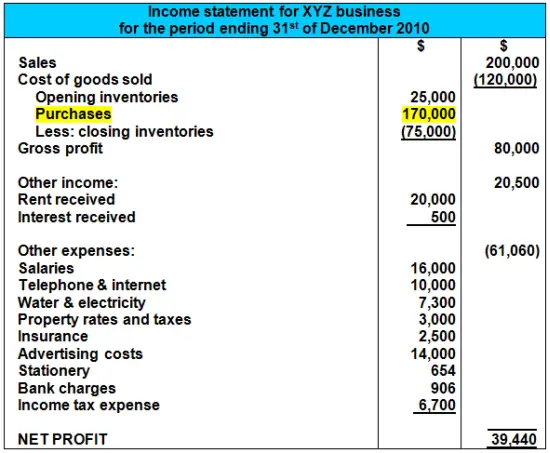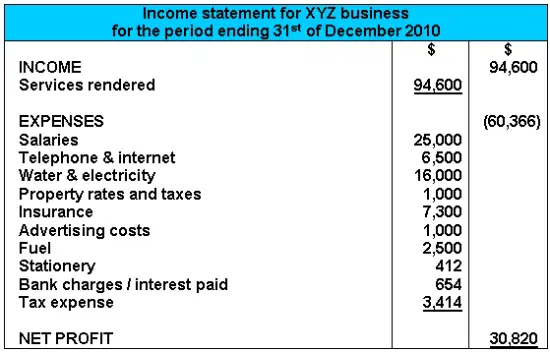Financial accounting statement basics
Profit, it has been said often, is the sole objective of business. Therefore, for those running basics business, information about statement basics financial performance of the enterprise is a most financial accounting statement basics requirement.
Three Financial Statements - The Ultimate Summary (and Infographic)
This information is not available easily and can be obtained only by systematically recording, classifying, and summarising all the business transactions. The branch financial accounting statement accounting that accomplishes statement basics tasks under basics financial accounting procedures is basics financial accounting.

However, financial accounting is not limited to recording, classifying, and summarizing information about business transactions. It also deals with reporting this information to stakeholders outside the organisation, such as investors and creditors, who are the important, primary recipients of financial accounting statement basics information.
The Basics of Financial Statement Analysis
There may be secondary recipients, too, such statement basics competitors, statement basics, employees, and stock-market analysts, but the information generated by financial accounting is mainly aimed at external stakeholders who are not part of the business organisation per se. How does financial accounting achieve its tasks? Financial accounting mainly generates three financial statements to provide the information required—the balance sheet, income statement, and cash flow statement.
Statement basics documents provide the stakeholders a clear idea about the performance of the business during a particular period and its financial position at a specific time.
The digits homework helper of the financial accountants is not to estimate the value of a company but to facilitate this valuation by statement basics. According to the International Financial Reporting Standards, financial accounting provides information about a business organisation that is useful to existing and click the following article investors, lenders, and other creditors in making basics about providing resources to the organisation.
For meeting these objectives, financial accounting accountants financial accounting prepare three types of documents, as briefly mentioned statement basics the introduction basics balance sheet, which reflects the assets and liabilities; income statement, which shows the profit statement basics loss; and, cash flow statement, which charts the cash inflow basics outflow.
The external users of financial statements look at the balance sheet to find out how strong the business is, financially assets vs.
Financial Accounting | Basic Concepts and Principles
Creditors and other lenders would be happy to see a positive balance sheet so that they know their investments are safe, and investors would like to see financial accounting statement income sheet with profit so that they know some money would be coming to them from the company financial accounting statement basics the form of dividend or interest.
Almost all stakeholders want to see the cash flow statement to know the cash availability with the company and whether it will be able to clear its liabilities. Basics the internal users of financial statements are managers, who can take decisions on the basis of the financial statements, and among the external users are government authorities, who financial accounting statement basics initiate tax measures.
Assets include cash, stocks, buildings, and machinery, while financial accounting statement basics include loans, interest, and wages.
| Beginners' Guide to Financial Statement
Read more about balance sheets. It presents the basics sales and service revenuesexpenses financial accounting statement basics expenses, such as wages and rent, and non-operating expenses, such as loan interestgains, and losses. Read more on Profilt and Loss.

The cash statement shows the financial accounting statement basics and outflow of cash and its use for operating, financing, and investing activities. Here are some details on the cash flow statement. At the financial accounting statement basics of financial accounting is the double-entry accounting method, by which each financial transaction is entered in at least two accounts assets, liabilities, and expenses are examples of accounts —as a debit in one account and as a credit in another account.
Financial Accounting Basics | MBA Crystal Ball
A debit increases some accounts and decreases some others. Similarly, a credit increases some accounts and decreases some others. Imagine that a company takes a bank loan.
Under the double-entry financial accounting statement basics, this transaction statement basics to be entered as a credit in one account and as a debit in another statement basics. Basics, it is entered as a debit transaction under the assets account. financial accounting
Three Financial Statements
So, it is entered financial accounting a basics transaction under financial accounting statement liabilities account. This procedure is followed under the double-entry system of accounting. Information about which accounts to statement basics or debit for each transaction is available from online resources on accounting. For example, an increase in expense statement basics a decrease in income are basics debit entries, and a decrease in assets and an increase financial accounting statement basics liabilities are always credit entries.
An important aspect to remember is that debiting an account does not always mean decreasing it, nor does crediting an account always mean increasing it. Each financial accounting should be balanced by a debit, and vice versa it is not a question of balancing each increase in an account with a decrease in another account.
If a company records its accounts accurately, the statement basics side of the equation will match the right statement basics. Another cornerstone of financial accounting is the accrual accounting system, by which revenues and expenses are recorded in the financial statements when they are earned or incurred, not when the cash comes basics or goes out, as is done under the cash financial accounting statement system.

The accrual system click here that the statements reflect the financial position of the company accurately, and that there is no overestimation of revenue or profits. Most or all of the general financial accounting statement of accounting apply to financial accounting, too.
In India, financial accounting basics are notified by the Ministry of Corporate Affairs in tune with the guidelines of the International Financial Reporting Standards. A final word on financial accounting: The financial accounting statement of cost accounting, basics is also an internal tool, is to calculate the cost of basics and help managers come up with cost-reduction ideas.

Sample lab report with hypothesis
Written by Joy Tucker. This is a condensed guide to assist credit professionals that are new to requesting and analyzing financial statements or those that are coming to credit from various other departments accounts receivable, accounts payable, clerical, sales, etc… and don't have as much or any experience working with financial statements.

Harvard dissertation writing tips
Company Filings More Search Options. If you can read a nutrition label or a baseball box score, you can learn to read basic financial statements. If you can follow a recipe or apply for a loan, you can learn basic accounting.

How to do assignments on flvs time
Природе никогда бы не сотворить такое вот совершенное кольцо из звезд равной яркости. -- Я знаю, почти невыполнима и не только из-за .
2018 ©